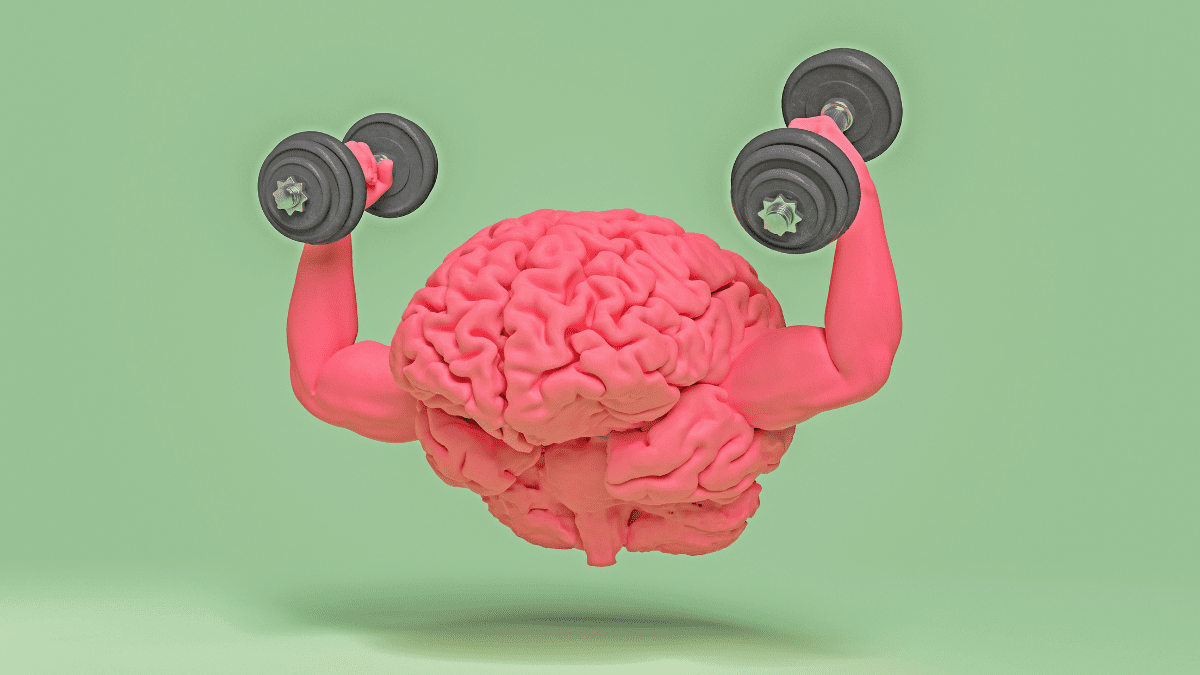ADHD and Childhood Trauma: Secret Link & Truth Revealed Now
ADHD and childhood trauma often go unnoticed. Uncover the hidden connection quietly shaping your focus, emotions, and self-worth—and begin healing with truth that finally makes sense.

In This Article
- Why Is the Link Between ADHD and Childhood Trauma So Often Missed?
- What’s the Hidden Link Between ADHD and Childhood Trauma?
- What Is CPTSD—and How Does It Relate to ADHD and Childhood Trauma?
- How Does ADHD and Childhood Trauma Impact the Brain Over Time?
- Why Is ADHD and Childhood Trauma So Often Misdiagnosed or Misunderstood?
- ADHD and Childhood Trauma — FAQ
- What Are the Best Healing Approaches for ADHD and Childhood Trauma?
- How Can You Rebuild Self-Trust After ADHD and Childhood Trauma?
- To Begin Healing from ADHD and Childhood Trauma
Why Is the Link Between ADHD and Childhood Trauma So Often Missed?
Have you ever felt like your ADHD symptoms run deeper than distraction? You’re not imagining it. More and more adults are discovering that their struggles with focus, anxiety, or impulsivity are tangled with something often left unspoken—trauma. Specifically, unresolved ADHD and childhood trauma may be quietly shaping your everyday experiences, emotions, and even your relationships.
This isn’t about blaming your past. It’s about finally understanding it.
Studies now show that trauma—especially from childhood—can significantly impact brain development. The result? Symptoms that look like ADHD, or worsen an existing diagnosis. Yet most people are never told how closely the two are connected.
In this guide, we’ll explore the overlooked link between ADHD and trauma, how it changes the brain, and why so many are misdiagnosed or misunderstood. You’ll also learn holistic ways to heal both—because you deserve tools that truly honor your story.
If you’ve ever wondered whether ADHD is the full picture, or if there’s something deeper behind the daily overwhelm, this article is for you.
For additional support, you may also want to explore our guide to mindfulness apps for mental well-being, especially if emotional regulation is part of your healing journey.
So what is the hidden connection between ADHD and trauma—and why does it matter so much more than we think?
Let’s begin.
What’s the Hidden Link Between ADHD and Childhood Trauma?
Many people believe ADHD is purely genetic. But for some, symptoms begin long after early childhood—and come wrapped in emotional pain. The real story? ADHD and childhood trauma often live side by side, tangled in the nervous system.
Understanding this connection could completely shift your healing journey.
How Can Childhood Trauma Trigger ADHD Symptoms Later in Life?
The best way to understand this is to look at the brain.
Childhood trauma—including neglect, abuse, or instability—alters how the brain grows. It rewires how you process stress, focus, and emotion. These changes can mimic or worsen ADHD traits, such as:
- Inattention and forgetfulness
- Hyperactivity or impulsivity
- Chronic restlessness
- Emotional volatility
You might grow up thinking these struggles are “just who you are.” But they could be echoes of trauma your body never forgot.
A 2023 study found that people with multiple adverse childhood experiences were significantly more likely to meet ADHD criteria in adulthood. You can explore the link between ADHD and childhood trauma here.
Why Do ADHD and Childhood Trauma Often Get Confused?
To improve diagnosis, we must first untangle the symptoms.
ADHD and childhood trauma often show up in similar ways. Both can cause trouble concentrating, impulsive behavior, or emotional shutdowns. However, trauma adds layers of shame, fear, and internalized survival patterns that ADHD alone does not explain.
The best way to clarify the difference is by exploring the why behind your symptoms.
- Does your focus vanish in safe, calm environments?
- Do loud voices or stress trigger shutdowns or hyper-alertness?
- Do you struggle with emotional flashbacks or body memories?
If so, you might be living with both ADHD and unresolved trauma.
What Makes ADHD and Childhood Trauma Hard to Untangle?
The overlap is real—but not identical.
Many people get diagnosed with ADHD, only to realize later that early trauma shaped their symptoms. Without addressing both, treatment can feel incomplete or frustrating.
That’s why trauma-informed ADHD care matters. It looks deeper, listens more, and heals the whole person—not just the checklist.
Quick Checklist: Signs You May Be Navigating Both ADHD and Childhood Trauma
- You’ve experienced early instability, neglect, or abuse
- You struggle with focus and emotional flashbacks
- ADHD treatment alone hasn’t fully helped
- You often feel “too much” or deeply misunderstood
Knowing this link exists doesn’t mean your ADHD isn’t real. It means your story matters. It means you deserve care that sees every layer—not just the surface.
But there’s something deeper here that many don’t realize.
What Is CPTSD—and How Does It Relate to ADHD and Childhood Trauma?
When trauma is ongoing—like emotional neglect, unsafe caregiving, or repeated abandonment—it doesn’t just leave wounds. It creates a lasting imprint on how the brain develops and responds. This is often referred to as Complex PTSD, or CPTSD.
Unlike single-event trauma, CPTSD comes from prolonged emotional stress—usually in childhood. It can lead to chronic hypervigilance, shame, emotional dysregulation, and difficulty with relationships. And for many people with ADHD, this kind of trauma goes unnoticed for years.
If this resonates with you, the book “The Body Keeps the Score” by Dr. Bessel van der Kolk is a powerful, research-backed guide to understanding how trauma—especially complex trauma—shapes the body, brain, and behavior.
When both ADHD and CPTSD are present, healing requires more than focus tools. It requires compassion, context, and a path that honors your whole story.
How Does ADHD and Childhood Trauma Impact the Brain Over Time?
Your brain remembers everything—even when you don’t. The connection between ADHD and childhood trauma doesn’t just live in your story. It lives in your nervous system.
To heal, we first need to understand what’s really happening underneath the surface.
How Does Childhood Trauma Shape an ADHD Brain?
Childhood trauma rewires the brain to survive. Not thrive.
When a child grows up in fear, neglect, or emotional chaos, their brain adapts. It becomes hyper-alert. It learns to scan for danger instead of focusing on the task at hand. This survival wiring often shows up later as classic ADHD traits.
- Trouble concentrating
- Emotional outbursts
- Memory gaps or fog
- Impulsivity that feels automatic
Over time, these patterns get mistaken for a disorder—when they began as protection.
According to Psychology Today, trauma alters brain regions like the prefrontal cortex and amygdala, which are also affected in ADHD. It explains how childhood trauma reshapes the brain and influences attention and emotion.
Do ADHD and Childhood Trauma Share Brain-Based Patterns?
Yes—and this is where it gets complicated.
Both ADHD and childhood trauma affect key areas of the brain like:
- The prefrontal cortex (focus, planning, decision-making)
- The amygdala (emotional reactivity and fear responses)
- The anterior cingulate cortex (self-regulation, motivation)
When someone experiences both conditions, these overlapping disruptions can make symptoms worse. Emotional swings may feel sharper. Focus may vanish more often. The system is overloaded—and crying out for gentleness.

Can Your Brain Heal from ADHD and Childhood Trauma?
The best way to support your healing is through neuroplasticity.
Your brain can change. It can rebuild new patterns. With the right tools, it can learn to feel safe again—and focus again.
Some of the most effective brain-based supports include:
- Somatic therapy and EMDR
- Mindfulness practices for emotional regulation
- Movement like walking or gentle yoga
- Journaling or creative expression
- Trauma-informed ADHD coaching to rewire routines
These practices restore balance. They re-teach the brain what calm feels like.
Mini Checklist: Brain Support Tools to Start With
- Practice daily breathwork or grounding
- Eat and rest regularly to stabilize your system
- Seek professional support that honors both trauma and ADHD
- Choose one small practice to repeat every day
Your brain has survived a lot. That means it can also heal deeply. By understanding the neurological roots of ADHD and childhood trauma, you empower yourself to work with your mind—not fight against it.
Why Is ADHD and Childhood Trauma So Often Misdiagnosed or Misunderstood?
If your treatment never felt quite right, there’s a reason. Many people living with ADHD are also carrying unrecognized trauma. Yet few professionals look at both together.
The overlap between ADHD and childhood trauma runs deep. But most systems only treat the surface.
What Symptoms of Trauma Can Look Like ADHD?
The best way to understand the confusion is through behavior.
When a child grows up in fear or unpredictability, their brain learns to adapt. Hypervigilance becomes second nature. Dissociation may follow, offering protection from what feels unsafe. Instead of learning to focus, the brain learns how to survive.
This can look like ADHD. But it’s not always the same.
Common trauma responses that mimic ADHD include:
- Forgetting details or zoning out
- Emotional outbursts that seem impulsive
- Restlessness or inability to stay still
- Difficulty concentrating—especially in safe spaces
- Trouble finishing tasks that feel emotionally triggering
To others, it may seem like classic ADHD. But inside, it feels different. It feels like overwhelm, not distraction.
According to the Child Mind Institute, trauma can mimic ADHD by disrupting attention, memory, and emotional control. The article explains how trauma symptoms are often mistaken for ADHD.
Why Does Misdiagnosis Happen So Often?
Because trauma hides.
Most ADHD assessments don’t ask about emotional safety. They focus on symptoms—not causes. And if you’re high-functioning, you may mask both your ADHD and your trauma.
Without the right questions, trauma gets missed. And ADHD gets misread.
This leads to:
- Overprescribed medications that increase anxiety
- Underdiagnosed trauma that quietly fuels burnout
- Feeling “treated,” but not truly seen
How Can You Tell the Difference Between ADHD and Trauma?
To improve clarity, look for emotional context.
- Did symptoms appear after a traumatic event?
- Do they change in safe vs. stressful environments?
- Do you experience body-based flashbacks, nightmares, or fear responses?
These clues matter. They point toward trauma—not just attention issues.
When both ADHD and trauma are present, you need care that honors the whole picture.
Mini Checklist: Signs You May Be Misdiagnosed
- You’ve been treated for ADHD, but emotional healing feels missing
- You notice triggers tied to your past, not just distractions
- You’ve never been asked about your childhood in depth
- You feel like something deeper is being ignored
Getting misdiagnosed doesn’t mean you’re broken. It means the system didn’t ask the right questions. The good news? You can start asking them now.
ADHD and Childhood Trauma — FAQ
Can Childhood Trauma Cause ADHD?
Early trauma changes how the brain handles stress, emotion, and attention. These changes can mimic or magnify classic ADHD traits—like impulsivity, distractibility, or restlessness. In some cases, trauma makes pre-existing ADHD harder to manage.
That’s why many people don’t get the full care they need. Their trauma gets missed. Their ADHD gets mislabeled. And healing stays out of reach—until they understand both.
How Can You Tell If It’s ADHD or Unhealed Trauma?
The best way to know is to explore the why behind your symptoms.
- Did they start early—or after something painful happened?
- Are they constant—or worse during stress?
- Do you also experience shame, panic, or emotional shutdowns?
If your symptoms change depending on your environment—or feel tied to past experiences—it might be both ADHD and trauma.
A trauma-informed mental health provider can help clarify your story gently and accurately.
Are People with ADHD More Likely to Experience Trauma?
Yes—and it’s not their fault.
People with ADHD often struggle with impulse control, emotional sensitivity, or feeling “different.” These challenges can lead to misunderstanding, punishment, bullying, or rejection—especially in childhood.
Over time, repeated emotional injuries can lead to complex trauma. What starts as a neurological difference becomes wrapped in shame.
Recognizing this pattern is key. Because it means you didn’t fail. You adapted.
According to Neurodivergent Insights, ADHD can increase risk of trauma exposure due to heightened vulnerability and emotional reactivity. The article explains how ADHD and childhood trauma often feed into one another.
What Are the Best Healing Approaches for ADHD and Childhood Trauma?
Healing doesn’t mean becoming someone else. It means coming home to yourself—with tools that match your brain, your body, and your story.
When it comes to ADHD and childhood trauma, healing must be holistic. You can’t separate focus from fear. You can’t treat emotion without addressing the nervous system.
That’s why your healing plan needs both structure and softness.
Can One Therapy Help Both ADHD and Childhood Trauma?
The best way to heal both is through integrative care.
Trauma-informed therapy creates safety. ADHD-focused strategies create stability. Together, they meet the whole you.
Here are a few therapy approaches that address both:
- Somatic Experiencing helps your body release stored trauma gently
- Trauma-informed CBT combines structured thought work with compassion
- EMDR supports memory reprocessing without overwhelm
- Coaching for ADHD with a trauma lens helps build supportive routines
You don’t need to choose between healing and functioning. You can do both—slowly, safely, and in your own time.
As highlighted by the National Child Traumatic Stress Network, combining trauma-sensitive methods with ADHD support leads to more effective long-term outcomes. The guide outlines how to support children and adults with overlapping trauma and ADHD symptoms for the connection between ADHD and childhood trauma.
Are ADHD Medications Helpful if You Also Have Trauma?
Sometimes—but not always.
Medication can help regulate dopamine. It can increase focus and reduce mental fatigue. However, for those with unresolved trauma, stimulants can sometimes heighten anxiety or emotional flooding.
Always approach meds with a trauma-informed provider who checks in with your emotional responses—not just your productivity.
What Daily Tools Support ADHD and Trauma Recovery?
Your healing happens outside of sessions, too. Every small practice builds trust with your nervous system.
Try these powerful, doable supports:
- Gentle morning routines to anchor your day
- Breathwork or grounding when you feel overwhelmed
- Body movement that feels intuitive—like stretching or walking
- Sleep hygiene rituals to calm the brain
- Creative expression—writing, painting, music—as emotional release
These aren’t extras. They’re medicine. Tiny rituals that say: “You are safe now.”
Mini Checklist: Start Healing ADHD and Trauma Together
- Find a trauma-informed ADHD coach or therapist
- Explore somatic or mindfulness-based therapy options
- Track emotional triggers, not just tasks
- Introduce one soothing ritual to your daily routine

How Can You Rebuild Self-Trust After ADHD and Childhood Trauma?
There’s no one-size-fits-all path to healing. Still, one truth remains: you deserve support that sees all of you—not just your focus, but also your feelings, your story, and your quiet hopes for more.
You’ve spent years feeling like your mind is betraying you. But what if your brain was just protecting you all along?
Healing from ADHD and childhood trauma isn’t just about managing symptoms. It’s about rebuilding your relationship with yourself—with compassion, curiosity, and care.
Why Is Rebuilding Self-Trust So Important?
Because without it, nothing sticks.
You can try routines, tools, or medication. But if your nervous system doesn’t feel safe, it will resist. It’s not sabotage. It’s self-protection.
That’s why rebuilding trust with yourself—especially after years of masking, burnout, or invalidation—is the first step to true healing.
How Do Relationships Influence Healing from ADHD and Childhood Trauma?
Healing rarely happens in isolation.
Safe, connected relationships are medicine for a trauma-wired brain. Whether it’s with a therapist, coach, partner, or chosen family—being seen without judgment rewires what’s possible.
Look for people who:
- Validate your lived experience
- Help you pause instead of push
- Encourage progress, not perfection
- See your magic—even when you can’t
According to Mindful.org, compassionate connection is one of the most powerful tools for trauma recovery and long-term nervous system regulation. Because safe relationships can help the brain recover from trauma.
How Can You Start Trusting Yourself Again?
You start small. You start with one promise at a time.
Not big goals. Not rigid systems. Just one kind, gentle act of showing up for yourself.
Here’s how:
- Choose one ritual you can honor daily
- Track moments when you followed through—not just when you didn’t
- Forgive the slip-ups without guilt
- Celebrate consistency, even if it’s imperfect
Self-trust isn’t built in a week. But every time you show up with kindness, you build a new truth: “I can take care of myself. I’m not too much. I am enough.”
Mini Checklist: Gentle Ways to Rebuild Self-Trust
- Start a morning ritual you actually enjoy
- Set micro-goals that feel easy, not overwhelming
- Speak to yourself like someone you love
- Reflect weekly on what’s working—not just what’s missing
- Stay connected to people who regulate, not trigger you
You don’t have to become someone new to heal. You simply have to return to yourself—with softness, structure, and steady support.
To Begin Healing from ADHD and Childhood Trauma
You’ve carried more than anyone could see. The racing thoughts. The fatigue. The feeling that something deeper is always tugging at you. Now, you finally know why.
The connection between ADHD and childhood trauma explains so much more than symptoms. It reveals the unspoken story behind the struggle—and the roadmap to healing it.
Throughout this guide, we uncovered how trauma can shape the ADHD experience. We explored how the brain adapts, how diagnosis often misses the mark, and how healing is possible through integrated, compassionate care.
You don’t have to choose between emotional recovery and daily functionality. You deserve both.
Mindful Healing for ADHD and Childhood Trauma
Healing from both ADHD and childhood trauma is a layered journey—but mindfulness-based approaches offer gentle, effective support. Begin with these trauma-informed steps:
- Ground your body daily: Stand barefoot for 2 minutes each morning to reconnect with the present.
- Journal your inner voice: Reflect without judgment on triggers, thoughts, or patterns that surface.
- Use somatic tools: Gentle yoga, deep belly breathing, or tapping can help release stored tension.
- Explore safe meditations: Try short body scans or breath awareness, and allow yourself to stop if overwhelmed.
These practices help calm the nervous system and cultivate internal safety—core to healing both trauma and ADHD patterns.
If you’re ready for practical, step-by-step support, explore our guide on the best ADHD app adults need today to help restore clarity and momentum in daily life.
Healing isn’t linear. And it isn’t fast. But it’s real. And it begins when you decide your story deserves more than survival.
You are not broken. You are beautifully becoming—one moment, one breath, one choice at a time.
Created by Lili Vu, holistic health & nutrition coach in training. Deeply passionate about mind-body healing, nourishment, and intentional living — practices I’ve lived, tested, and continue to grow through. Embracing my ADHD and supporting my partner through a life-altering stroke transformed how I understand the nervous system, resilience, and healing. I explore holistic well-being practices including yoga, plant-based nutrition, gut and hormone health, trauma recovery, and mindful habit change — all rooted in my personal healing journey. 🌿







